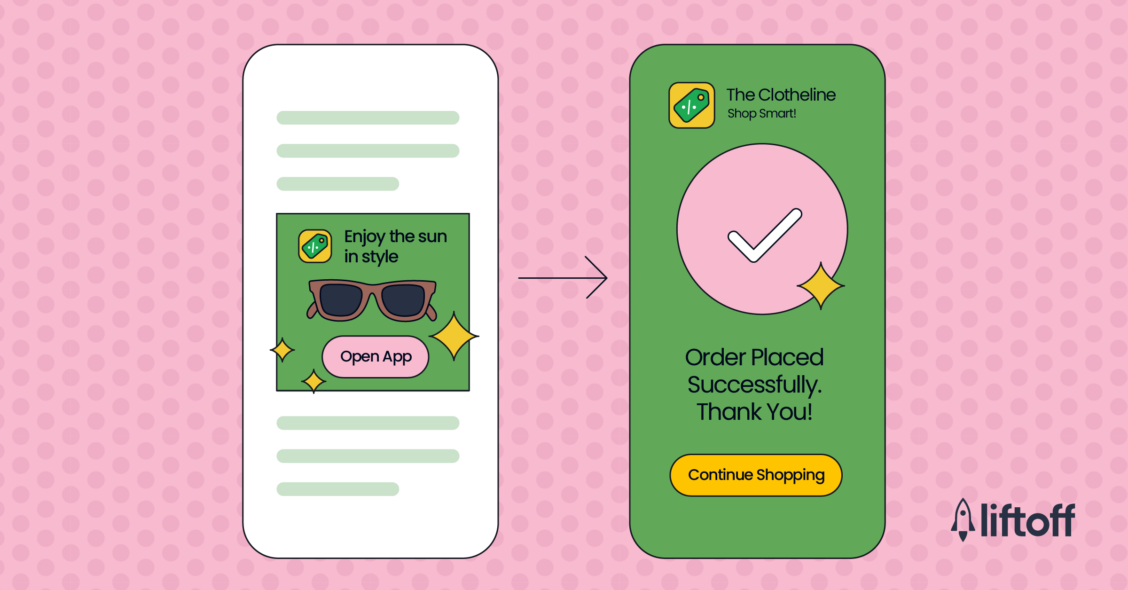
Why Android Re-Engagement Matters, Now More Than Ever
As both iOS and Android show signs of eliminating device ID data collection, the future of data reliability has become significantly more uncertain. Without the ability to gather accurate user-level data, increasing privacy regulations across both platforms make it difficult for mobile marketers to reach their audience and deliver effective marketing campaigns. That’s why taking advantage of deterministic data and device IDs is imperative before they become more broadly unavailable.
In addition to providing marketers with the information they need to reach their audience and plan better strategies for the future, deterministic data also allows them to re-target and re-engage users who have already installed their apps.
Re-engagement remains one of the best ways to leverage deterministic data. Many mobile marketers, however, have deprioritized re-engagement campaigns in the wake of Apple’s SKAdNetwork (SKAN). So, while re-engagement may not matter as much on iOS for mobile marketers, re-engagement on Android still matters. Here’s why.
Re-engagement revival: Why Android? Why now?
While SKAN prevents app marketers from utilizing IDFA data, Google still allows you to take advantage of device identifiers on Android. Google, however, has recently taken a firmer stance on privacy with the upcoming release of Privacy Sandbox on Android. Once Privacy Sandbox on Android launches, app marketers will lose access to Google Android ID (GAID) and its benefits, including re-engagement campaigns.
Google’s Privacy Sandbox on Android is in beta and slated for full release in 2024.
If app marketers want to maximize their resources with the most actionable data, they should take advantage of re-engagement campaigns on Android before it’s too late.
Boost retention and reduce churn
90% of users, on average, who install an app will stop using it after 14 days. Additionally, 24% of users abandon an app after just one use. High churn rates like these are significant obstacles to mobile marketers acquiring high-LTV, long-term users. As a result, advertisers need more effective ways to reduce churn and retain the most valuable users.
Re-engagement campaigns target churned users to drive incremental engagement, revenue, and long-term retention. Re-engagement campaigns utilize three key components to target the correct users with relevant ads:
- Device IDs (i.e., GAID)
- Inactivity and blackout windows
- Deep links
Device IDs are an essential component of re-engagement campaigns. They allow you to identify who has already downloaded your app so your campaigns can avoid targeting active users. When used in combination with inactivity and blackout windows, which set a timeframe within which you should or should not retarget a user, device IDs allow machine learning models to identify inactive users who will most likely re-engage with your app, whether that’s playing the next level in a mobile game, making a deposit in a finance app, or ordering food delivery during peak hours in a food delivery app.
In parallel, deep links ensure a smooth user experience. When a user clicks on a deep-linked ad, the link redirects the user to the advertised app installed on the device rather than the app store. Because the user is prompted with a frictionless ad experience to engage with the app, they are more likely to complete the desired action, increasing retention and revenue rates.
Keep it simple
When choosing an advertising partner, consider one that offers both UA and re-engagement solutions. Running UA and re-engagement together simplifies your campaign strategy to save time, increase efficiency, and prevent cannibalization. At Liftoff, Accelerate customers who ran UA and re-engagement campaigns together saw up to a 50% decrease in CPA.
